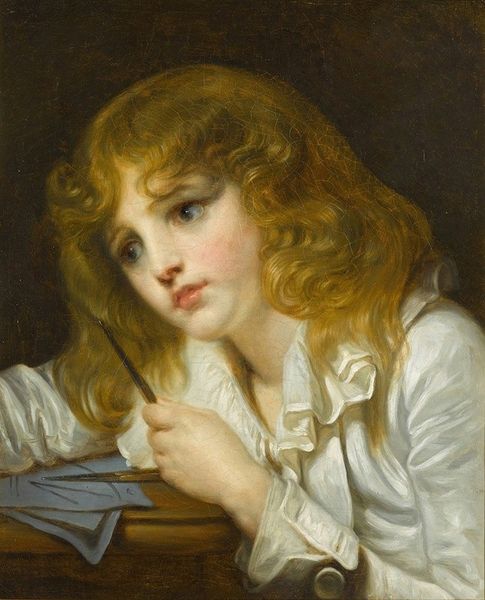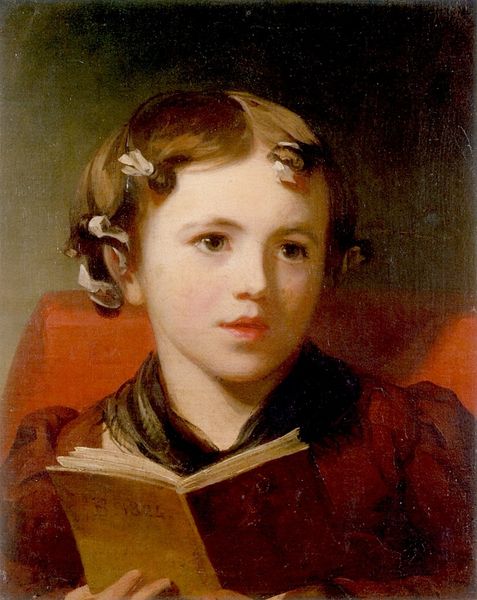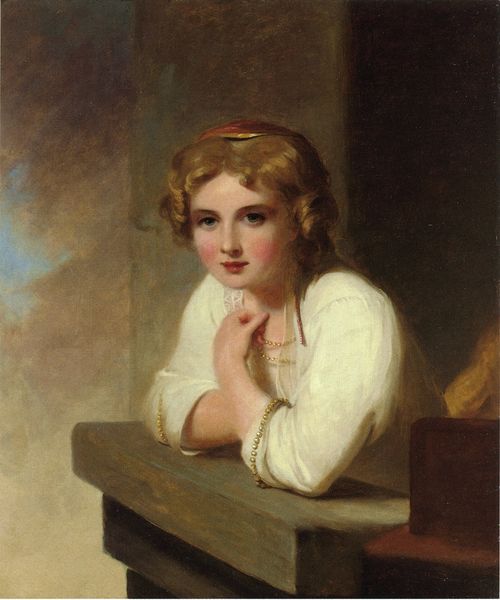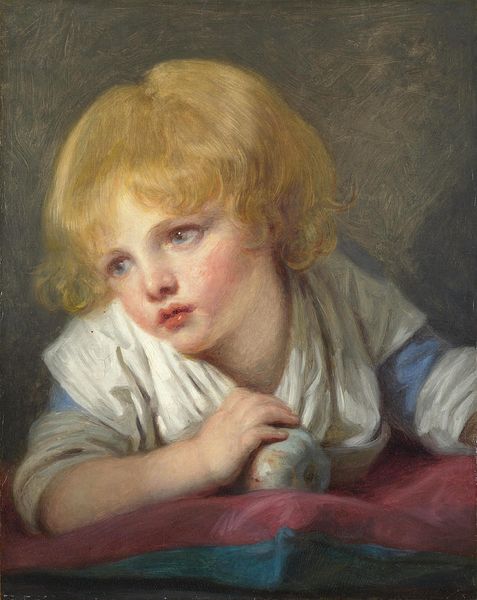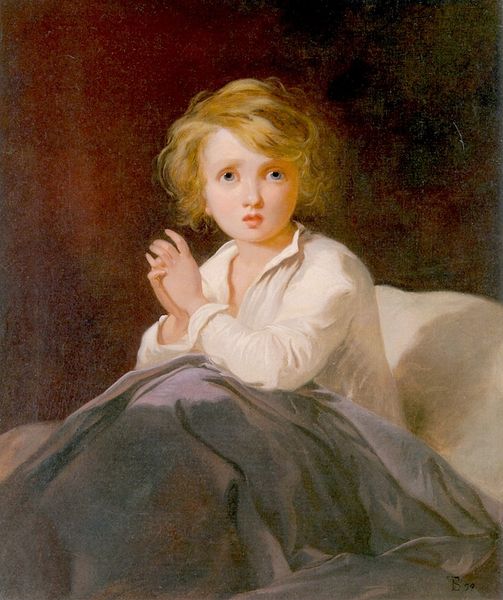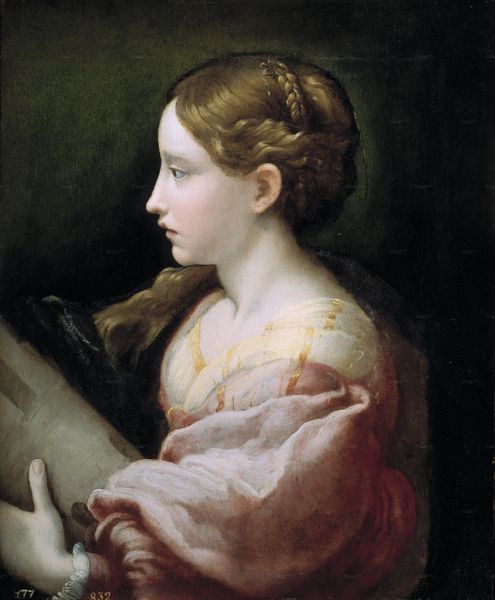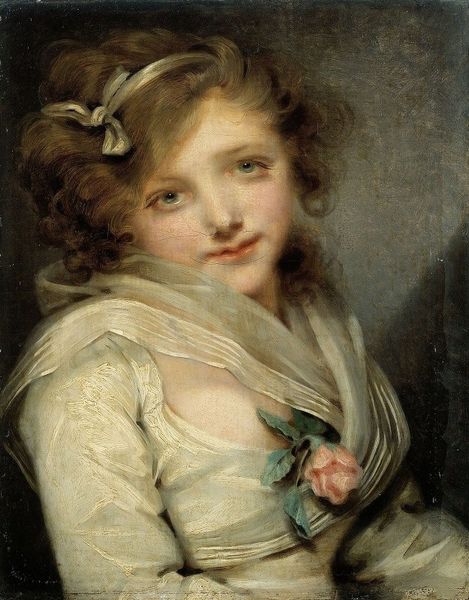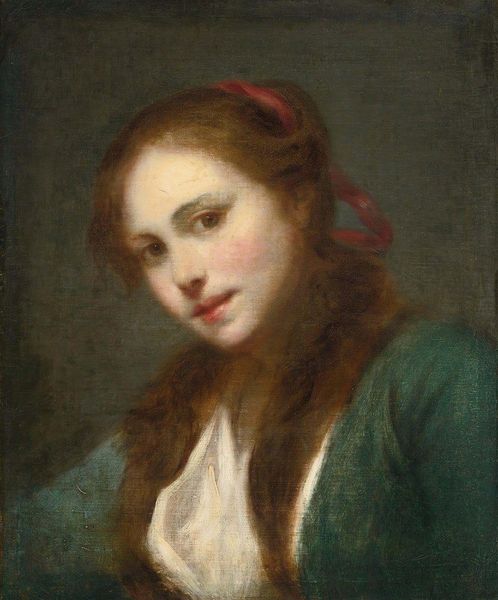
Copyright: Public Domain: Artvee
Editor: This is "Portrait of a Child" by Thomas Sully, painted in 1866 using oil paint. She seems lost in thought, maybe a bit melancholic. It's really evocative. How do you interpret this work in terms of its time period? Curator: Well, let's consider the public role of portraiture in the 19th century. These weren’t casual snapshots; they were carefully constructed representations of social standing and aspirations. Who commissioned this painting, and for what purpose, are key questions. A portrait like this could have been displayed publicly in the home, projecting an image of prosperity and familial love. Editor: That makes sense. It’s definitely posed, not spontaneous. Do you think her wistful gaze has something to do with the historical context too? Curator: Possibly. Remember that romanticism, with its focus on emotion and the individual, still lingered. But there’s also the rise of photography putting pressure on painting to justify itself. Portraits had to offer something more than mere likeness. Did Sully try to imbue her with symbolic significance, perhaps referencing a narrative or conveying a message about childhood innocence or impending womanhood? Notice the inclusion of the sewing kit, perhaps alluding to domestic expectations for girls. Editor: So, the items in the painting aren't just decorative; they tell a story about her role in society. Is there a statement that Sully is making? Curator: Precisely. We must also consider what this imagery communicates to audiences over time, too. How has this portrayal of childhood innocence changed as perceptions about the socio-political realities of childhood changed over time? Editor: I never thought about portraiture as a kind of political statement. Thank you for clarifying, I find it super fascinating! Curator: And I now see the lingering sentimentality of childhood a bit differently too.
Comments
No comments
Be the first to comment and join the conversation on the ultimate creative platform.
